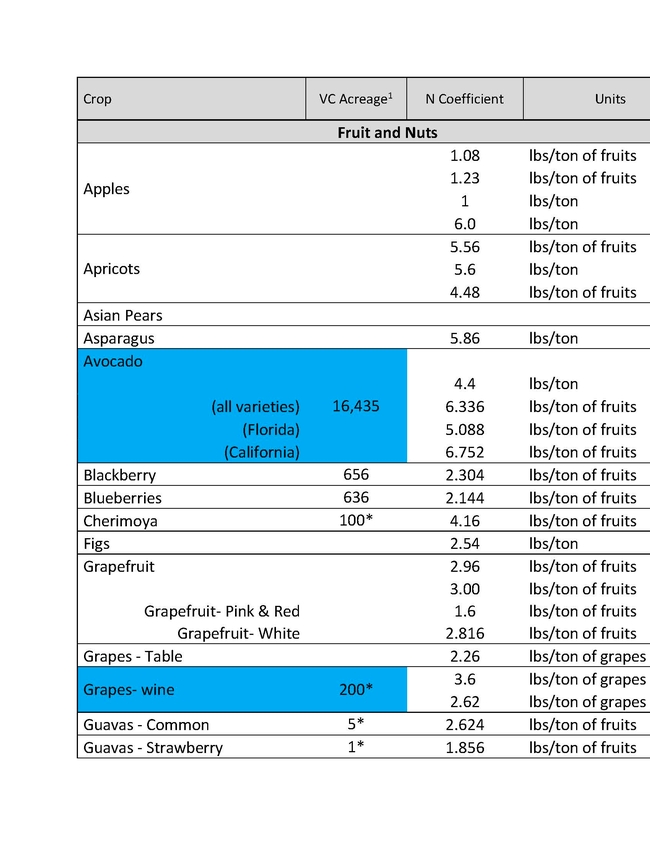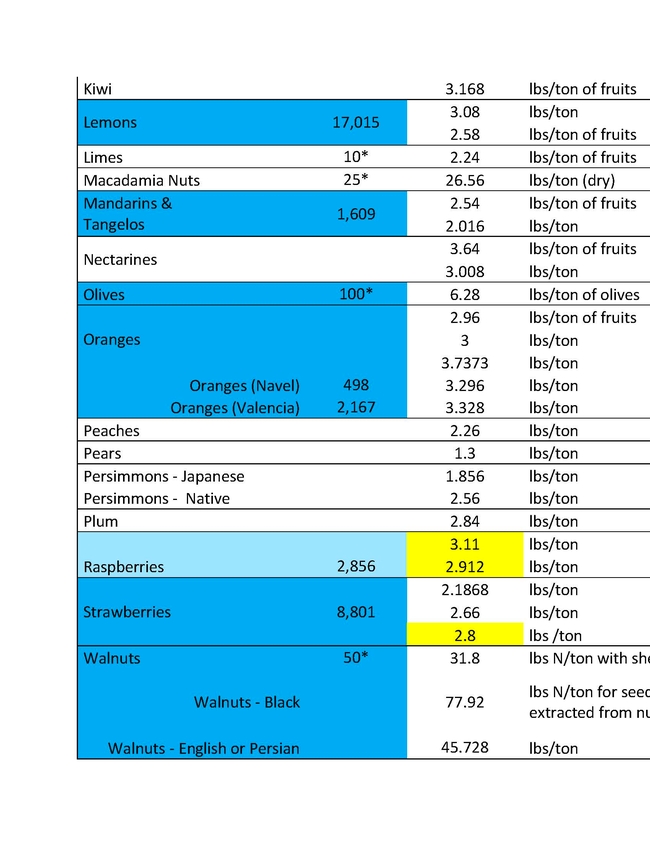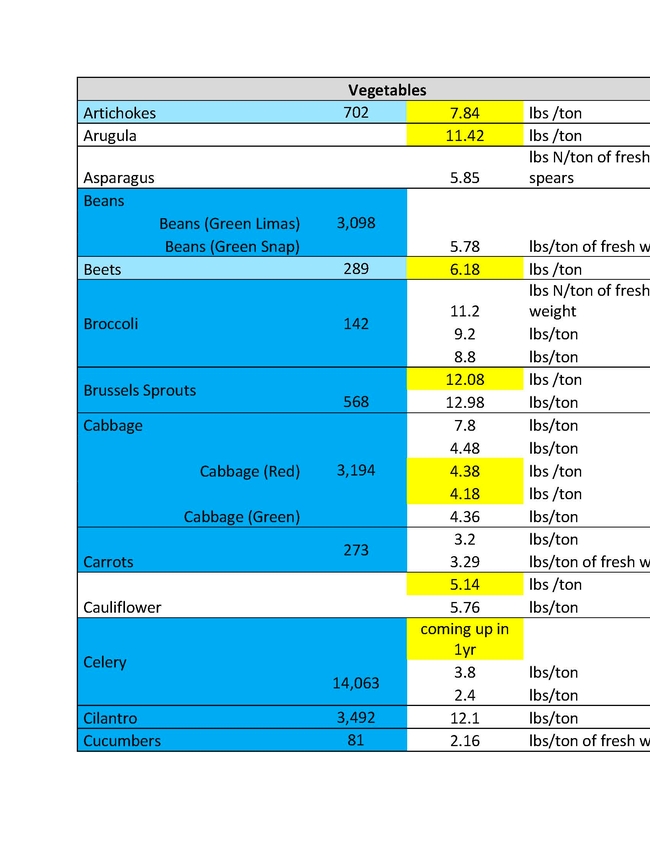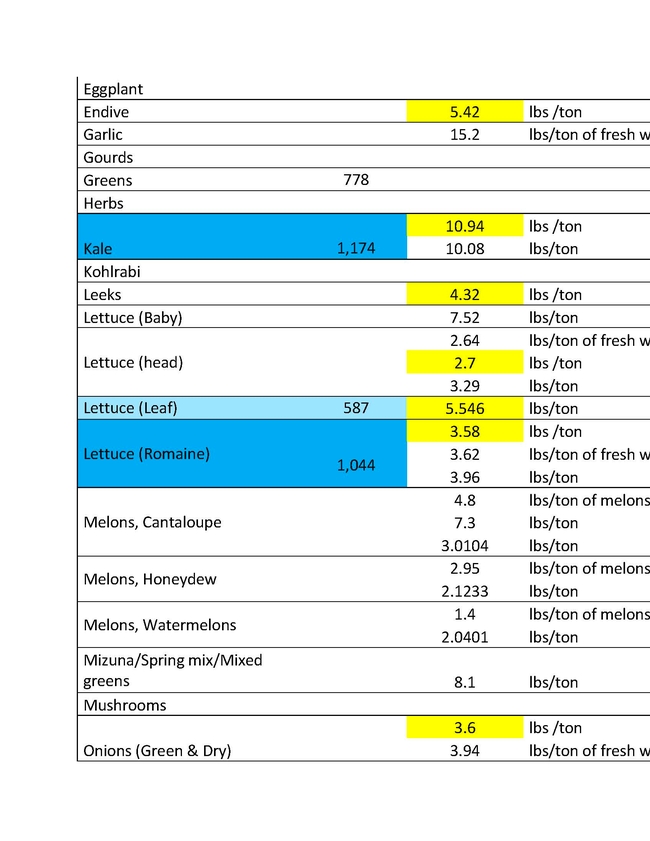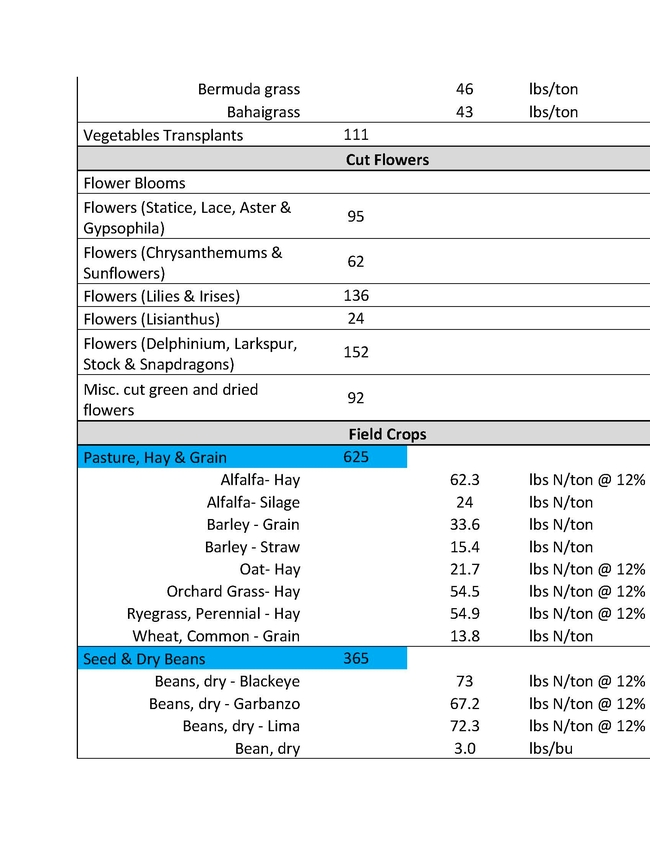The ratio of N applied to N removed is a key metric in the Central Valley Irrigated Lands Regulatory Program (CVILRP). Growers report applied N and yield to agricultural water quality coalitions. The coalitions in turn convert yield to N removed from fields and report various statistics to the Central Valley Regional Water Quality Control Board. Nitrogen accumulated into perennial plant tissues may also be counted as “removed”. For these calculations, reliable values of N concentrations in the harvested parts and perennial tissues of crops are needed. It's important to know the amounts of N removed by various crops in order to have a better estimate of how to manage N to avoid ground water contamination.
For a report released in 2016, Geissler and team mined the scientific literature for data on N concentrations in harvested crop parts with an emphasis on California data (Geisseler, 2016). For many commodities, a robust dataset of recent samples from California was not available. With financial support from the California Department of Food and Agriculture – Fertilizer Research and Education Program (CDFA- FREP) and the help of the Kings River Watershed Coalition, John Dickey, Ken Miller, and their team at the Southern San Joaquin Valley Management Practices Evaluation Program, a large number of samples were collected and then processed in the author's nutrient management lab at UC Davis. The present report is the second update of the 2016 report, the first being released in March 2021, and includes results for kiwis, lemons, mandarins, oranges, nectarines, and grain sorghum. In addition, recently published data for cotton and N in perennial parts of cherry and citrus trees were included.
This sort of reporting will soon be required in all the Water Quality Control Board Regions. Understanding how much nitrogen to apply is important not only for insuring water quality, but also for tree growth, health and insect and disease management. An expanded list for coastal crops will soon be made available by Richard Smith, Andre Biscaro and Michael Cahn.
You can read the more detailed discussion of the Geissler report HERE.
In the tables presented here "VC Acreage" represents the acreage of a given crop in Ventura County and "N Coefficient" is the amount of that crop removal represented in the different units in the following column. There are different estimates for different crops largely because of varietal differences, soil types and climatic conditions of different growing areas. The values are not exact, but approximations to give growers a better understanding of what a crop would use and therefore how much N to apply.
